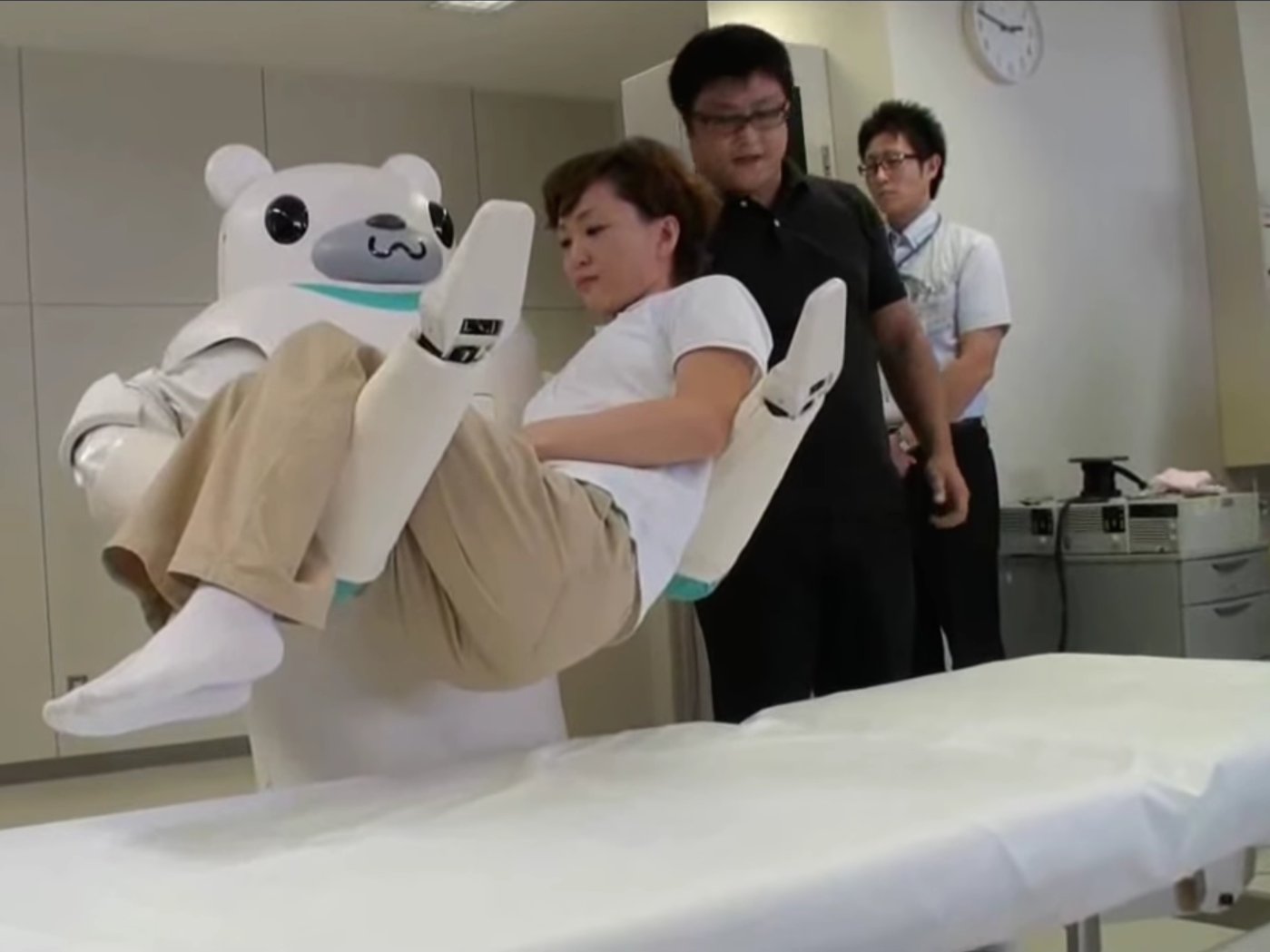Seniors at Home are Getting a Helping Cyborg Hand, Reports BrightStar Care/North Suburban
 Scientists and researchers are working with robots and teaching them to recognize and understand human behavior. One goal is to design them to be of greater assistance to all of us on a daily basis and to help the elderly aging in place at home. Will they become self-aware and try to take over the world? The worlds of home and industry are more likely to be where they're employed, but robots with self-awareness are being worked on to produce robot allies (and friends?) that feel, see and, in particular, think and learn like us. Cyber pets are another possibility. In Japan, cyber-pets such as the robotic seal, Paro and dog, AIBO were popular until Sony discontinued them. When asked why they pulled the pets, Sony explained they weren't house broken and ate the recycling. (Just kidding). Safety and mechanical issues were concerns.
Scientists and researchers are working with robots and teaching them to recognize and understand human behavior. One goal is to design them to be of greater assistance to all of us on a daily basis and to help the elderly aging in place at home. Will they become self-aware and try to take over the world? The worlds of home and industry are more likely to be where they're employed, but robots with self-awareness are being worked on to produce robot allies (and friends?) that feel, see and, in particular, think and learn like us. Cyber pets are another possibility. In Japan, cyber-pets such as the robotic seal, Paro and dog, AIBO were popular until Sony discontinued them. When asked why they pulled the pets, Sony explained they weren't house broken and ate the recycling. (Just kidding). Safety and mechanical issues were concerns.
At the University of Twente in the Netherlands, researcher Frank van de Velde wants to implement the cognitive process of the human brain in robots. “The application of cognition in technical systems should mean that robots “learn” from tasks they perform,"explains van de Velde (Frank) -- for example a robot that spills too much coffee (vodka) when filling a cup (martini glass) can then learn how do it correctly and efficiently.”
Robots as part of our daily lives is around the corner: Robbie and pals capable of dialing 9-1-1 in an emergency; helping seniors at home with (ADLs) Acts of Daily Living, like lending an arm for support while you get into the tub. Robbie won't care if you're not exactly dressed for the occasion, or if you're dressed at all, so you won't have to be shy.
Plus robots may not cost and arm and a leg and a 15-chamber heart; the government may help pay for their use because they save money, help lower readmission rates to nursing homes and have design sophistication that allows them to perform nursing functions at home.
The Carebots are Coming In Japan
Japan is already robotic steps ahead of us, according to "Business Inside Magazine." 20% of Japan's population is 64 or older, but the amount of caregivers is marginal and the numbers are not growing proportionate to the elder population. To address the issue, Japanese companies are leading in the development of "Carebots" designed specifically to assist older people. Japan is not investing in a small way. One third of the Japanese government's budget is devoted to developing Carebots. Check out the good-looking robot dude named ASIMO (above). (He, she, it) is an autonomous, humanoid robot that could help the elderly by getting them food or turning off lights.
In the picture above, ASIMO is carrying (her, his, its) weight by transporting a patient to a gurney. Let's give (him, her, it) a real hand. If you're worried about safety, The International Organization for Standardization (ISO), that sets the standards for 164 member countries, recently created a new standard to ensure that interactions between Carebots and humans remain safe. In fairness, not every safety organization is sure this is the best idea since sliced bread cooked in a machine. An online pub in the U.K. called the "Telegraph," believes they are potentially dangerous. (Check out the article, but not 'til were done here. BrightStar Care/North-Suburban likes having you around.) Get ready seniors and others; sons and daughters of Robbie are getting ready to move in and you might not even have to use a spare bedroom. A closet may do just fine.
You May Soon Count on Carebots for:
- Alerting the police or rapid responders if there’s a fall, or heart attack or serious incident.
- Being able to monitor (and report) ECG, temperature, blood glucose and oxygen levels and more.
- Ambulatory support around the house or down the street.
- Washing the floors, sweeping, cleaning, dusting, raking leaves, burning the snow off the walk.
- Delivering meds at 4 pm along with tea (Earl Grey please).
- Assisting the blind as robot guard dogs.
- Siting and on watch for hours with Alzheimer’s or dementia patients.
- Providing surveillance and security of the house and grounds (Robbie will never sleep and will probably have sensors that can detect everything from mice to vandals).
- Keeping you comfy and secure as a companion.
- Perhaps joining you at the dinner table. “Pass the WD-40 please.”
- Home care, elder care, and caregivers
- Alzheimer’s and Dementia Care
- Childcare, nanny services, and special needs care
- Medical staffing solutions
- 24?Hour High Tech Care for Adults, Children and Infants
- Medication Set?Ups and Reminders
- IV Therapy
- Physical Therapy
- Speech Therapy
- Occupational Therapy
- Shopping and Transportation Services
- Sitting/Companion Service
- Nanny Service
- And much more
Resources: Business Insider: Japan is running out of people to take care of the elderly, so it's making robots instead.http://www.businessinsider.com/japan-developing-carebots-for-elderly-care-2015-11 CES 2017: LG expands lotT scope with home gateway Hub Robot:http://www.zdnet.com/article/ces-2017-lg-expands-iot-scope-with-home-gateway-hub-robot/ Business Insider: Japan is developing carebots for elderly care. http://www.businessinsider.com/japan-developing-carebots-for-elderly-care-2015-11 University of Twente (Netherlands):https://www.topuniversities.com/universities/university-twente Telegraph (U.K.): http://bit.ly/1sOjfPn

